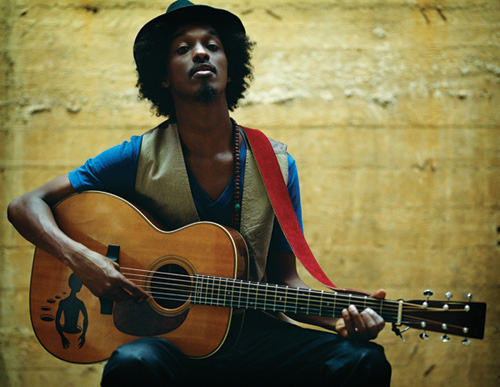Somalia hasn't had a functioning government for over 20 years. In addition to the terrorism instituted by the prominent Taliban groups and the infamous pirates, life in Somalia has rapidly deteriorated and resulted in millions of refugees fleeing to find better life outside the dysfunctional country. Among these are Somali born Canadian poet, singer, and rapper K'Naan who left his homeland at the tender age of 13 on the last commercial flight from the country. This has undoubtedly been the most reoccurring subject matter of his music. His debut album, "The Dusty Foot Philosopher," is an unconventional hip hop record, strongly influenced by ethio-jazz and Somali melodies and rhythms. His second major release, Troubador, despite its increased western commercial appeal, was still unique and strongly influenced by these African roots. This is befitting since Somali and African life and culture has been a strong and recurring subject in his music. On this album, however, K'Naan has veered away from not only his usual subject matter, but also his entire sound and style.
His latest release, "Country, God, or the Girl," is almost worlds away from his previous albums. Whereas his previous projects were seamlessly eclectic, melting traditional east african chants, poetry, and melodies with hard hip hop vocals, cinematic strings and driving rock guitar, saxophone solos and American jazz and soul, this album falls a little short. It is still as eclectic and stylistically dynamic but it seems more of a confused jumble than a seamless harmony. It is obvious with tracks like “Is Anybody Out There,” “Sound of my Breaking Heart,” and “Alone,” that K’Naan is going for a more poppy commercial appeal. Besides the occasional tribal drums and the Somali verse on “The Wall,” (one of the more K’Naan-esque tracks) it is hard to find any African influence on this album: something that had become typical of him. In addition to a greater ratio of singing to rapping, fans might find that K’Naan’s artistic evolution has resulted in the loss of his uniqeness.
That being said,this album still has a lot going for it. The Dusty Foot Philosopher managed to lock down one of the most diverse list of features, including Will.i.Am, Nelly Furtado, Nas, Mark Foster, Bono, and Keith Richards. (looks like a “we are the world” reunion) The Nas assisted “Nothing to Lose,” offers the grime and edginess that hip hop fans will enjoy, and “Bulletproof Pride, featuring Bono,” is an insightful and relatable ballad which chronicles a typical relationship. Other than these two, I think the features significantly detract from this album. Earlier in his career, K’Naan was opposed to collaboration, saying that it interfered with his own artistic vision. (his first album had only one feature) If he had stuck to these sentiments, this album would’ve been much better.
Some of the more ‘K’Naan-esque” moments on the album are the piano lead “Waiting is a Drug,” the jingly “Hurt Me Tomorrow,” the melodic 808 centered “Gold in Timbuktu” and “More Beautiful than Silence,” the soulful “On the Other Side.” My personal favorite and perhaps most nostalgic for many fans are the hard hitting “The Wall,” which features world dance drums, jubilant acoustic guitar,african chanting similar to those on “In the Beginning,” of his first album and political, intro and outrospective, poetic rap. My other favorite is “70 Excuses,” an equally introspective track featuring spacy pads and choir vocals, as well as an impeccable jazzy saxophone riff reminiscent of “Fire in Freetown,” of his second album.
All in all, K’Naan’s album for overcoming political, spiritual, and romantic obstacles, is typical of a K’Naan album in dynamism but lacks in kinship, primarily due to an attempt at commercial appeal and ineffective features. It will also leave fans confused as he strays away from more Somalia-centered political subject matter.

